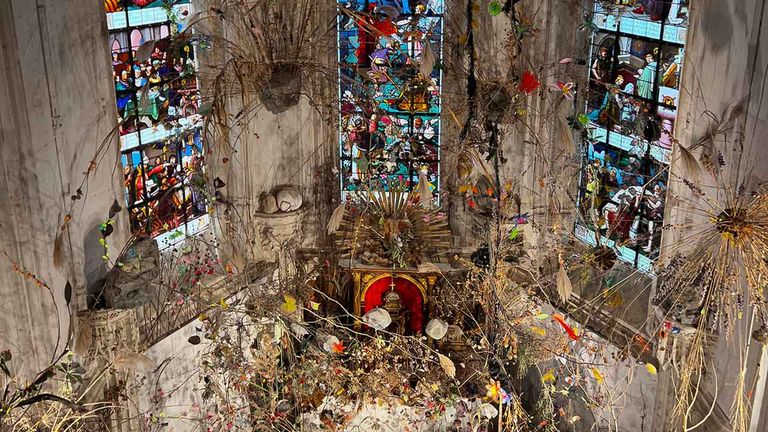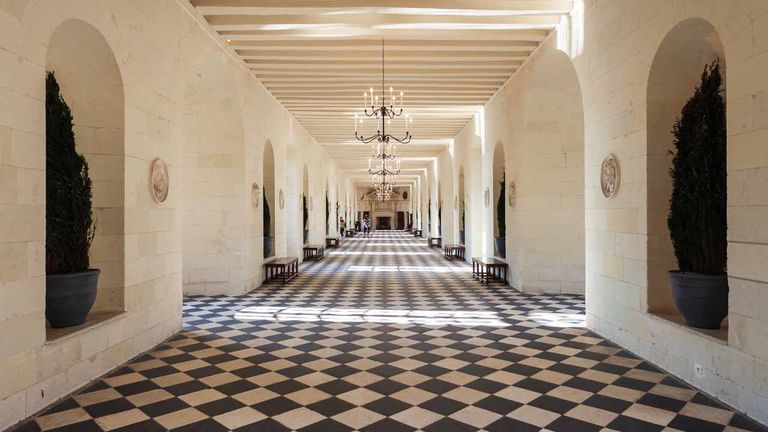The Loire Valley is known as the “Cradle of the French,” as its vineyards and fairytale scenery are a classic representation of the French countryside. The valley’s green landscape, nurtured by the waters of the Loire River, was as much a draw for the royalty of a former era as it is an attraction for tourists today.
Many kings and queens settled in France’s Val de Loire and commissioned the construction of numerous castles, ultimately making the region the densest collection of chateaux in the country. But while these castles may be prime examples of French architectural magnificence and grandeur, there are so many of them in the region — roughly 300 — that it can get repetitive to tour them. Even the most eager castle enthusiast can get “chateau’d out” after seeing room upon room of 16th-century antiquities and yet another tapestry.
However, if you look away from the classical portraiture and antique furniture, you can get a refreshing new perspective on these centuries-old dwellings. Several of today’s castle-keepers have developed out-of-the-norm experiences so that their royal abodes can stand out as a memory amidst the inevitable post-vacation blur of too many chateaux.
Here are a few that really pop.
Domaine de Chaumont-Sur-Loire
While the chateau of Domaine de Chaumont-Sur-Loire is littered with Louis XII’s porcupine emblem, what truly sets it apart is that many of its rooms have been repurposed for contemporary art installations, juxtaposed to the medieval antiquities.
 Domaine de Chaumont-Sur-Loire features a rotating roster of contemporary artists.
Domaine de Chaumont-Sur-Loire features a rotating roster of contemporary artists.
Credit: 2022 Erik TrinidadThe art exhibition has a rotating roster of artists, and previous installations have included “Effets de Soir,” the larger-than-life digital projections of artist Quayola, and Chiharu Shiota’s “Direction de Conscience,” an installation in a room filled with a web of black strings. One notable installation was Gerda Steiner and Jörg Lenzlinger’s “Les Pierres et Le Printemps” in the chateau’s chapel, which was the artists embellished with branches and dried plants.
The chateau’s adjacent gardens, hotel and restaurant — Le Grand Chaume — also continue the contemporary theme amidst a countryside stuck in time.
Chateau du Clos Luce
Chateau du Clos Luce in Amboise is not just any old castle from the 16th century; it’s the former residence of polymath Leonardo Da Vinci, where he studied and painted in his later years until his death in 1519. While a tour of the interior reveals antique beds and tables not unlike ones found in many other castles in the region, these come with the clout that Da Vinci slept there.
Beyond his old bedroom and painting studio, the keepers of Clos Luce have double downed on Da Vinci and have converted the chateau grounds into a family-friendly museum of all things about the beloved Renaissance Man. There are many interactive exhibits, including kinetic sculptures inspired by his inventions, and even an arcade with a video game inspired by his ornithopter flying machine.
The local restaurant also keeps with the Renaissance theme: All the servers wear period clothing, and dishes include Hoche Pot, a hearty stew of Da Vinci’s time.
Villandry Chateau & Gardens
If you’re lucky, you might run into the current owner of Villandry Chateau & Gardens — the humble Henri Carvallo, who lives not in the castle itself, but in a smaller house on the other side of the giant domaine. He and his staff maintain the chateau, which is a well-preserved museum with its past on public display. Villandry has the usual 16th-century tapestries, classical art, and antique furniture you’d expect from a French chateau; but what makes it stand out is what’s just outside: the grandiose botanical gardens so spectacular they almost overshadow the castle. With their meticulously crafted landscape design, the gardens make such an impression to behold that the chateau even has a photography gallery of its superstar gardeners.
The botanical gardens have a variety of flowers and many seasonal vegetables (planted in artistic fashion, of course) that supply the adjacent restaurant, La Doulce Terrasse. If there are any extra veggies, you’ll see them on the porch of Carvallo’s house, which he’ll use to make dinner for his daughter.
Chateau de Chenonceau
Chateau de Chenonceau has a long history of women expanding upon its original structure of an old manor house from 1517, built under Katherine Briconnet. Diane de Poitiers built its bridge over the adjacent Cher River in 1547, and then Catherine de Medici — inspired by the palace in Florence — built a similar structure over that bridge in 1559. Today, the imposing fairytale castle over water is a stunning place to visit, with its long hallways over the river and preserved 16th-century rooms. In particular, the impressive kitchen adorned with a plethora of copper cookware will impress any aspiring chef.
 Chateau de Chenonceau is called the “ladies’ chateau.”
Chateau de Chenonceau is called the “ladies’ chateau.”
Credit: 2022 saiko3p/stock.adobe.com
However, for a change of pace, walk away from the castle to the building across the gardens that holds the old wine cellar. It’s still in use and, in fact, offers wine-tasting sessions. You’ll also find the old apothecary, a photogenic room out of a Harry Potter novel. It was here that Catherine de Medici, who was attracted to the dark arts, consumed many concoctions containing elements considered harmful today, including mercury.
Chateau de Chambord
Encompassing nearly 14,000 acres, the grounds of Chateau de Chambord — including its forests and marshland — are about the size of the entirety of Paris. At the center is the chateau itself, once the largest castle in the entire French kingdom, and certainly still the largest in the Loire Valley to this day. While its leviathan size is undoubtedly impressive, the tapestries and antiques within are nothing unlike what you might see elsewhere.
However, what sets this massive residence of Francois I apart from other royal houses is its staircase. It’s a unique double-helix design that links each of the floors — essentially two non-intersecting spiral staircases twisted together. This means one person can go up one stairwell while you go up the other, and you can see each other through the opening in the center. Either way, they lead up to the view on the terrace, overlooking the rest of the domaine.
Chateau of Domaine de La Tortiniere
Why merely visit a chateau when you can stay in one? The chateau on the grounds of Domaine de la Tortiniere in Veigne is actually a functioning hotel, with an interior design that’s out of a Wes Anderson film. It’s a great place for a gourmet dinner, or simply to live out a storybook fantasy by sleeping within its walls.
If you’re there in late summer or early autumn, the small meadow of colorful cyclamen flowers leading up to the castle can make the experience feel even more magical.